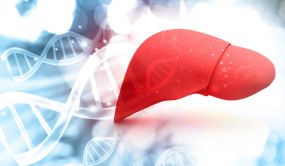Dick Cheney’s ‘Heart’ Book Tour: 5 Things The Former Vice President Reveals About His Heart Health

Former Vice President Dick Cheney says that he has battled heart problems his entire political career. In his new book, aptly titled Heart, he discusses how his cardiovascular problems impacted his family and his approach to the vice presidency.
The 72-year-old sat down with Dr. Sanjay Gupta for an interview that aired on CNN this week and is also scheduled to appear Sunday on 60 Minutes on CBS. In very candid interviews, Cheney revealed shocking details about his heart health. He described his current health as “a miracle.”
Here are five things we learned about former Vice President Cheney from those interviews:
1. He has had five heart attacks in his lifetime. Cheney says he suffered his first heart attack in 1978. He was only 37 years old. Since then, he had heart attacks in 1984, 1988, 2000, and 2010.
After one of his heart attacks, he had a defibrillator implanted to shock him out of dangerous and deadly abnormal heart rhythms. And after his 2010 heart attack, Cheney had a Left Ventricular Assist Device (LVAD) implanted, a mechanical pump that takes over the heart's job of circulating blood. Finally, just 20 months ago, he had a heart transplant.
2. He feared terrorists would try to assassinate him by accessing his implanted heart device. In 2007, Cheney had cardiologist Jonathan Reiner replace his defibrillator because he thought that terrorists could use it to send his heart a fatal shock. He has the wireless function on the device disabled to avoid the possibility of his assassination. He said that years later, he watched an episode of Homeland, where that exact incident occurred.
"I was aware of the danger...that existed...I found it credible," he told Gupta. "I know from the experience we had and the necessity for adjusting my own device, that it was an accurate portrayal of what was possible.”
3. He could have died on September 11, 2001. Dr. Reiner, Cheney’s cardiologist, received blood tests on the morning of 9/11 that made him very concerned about the then vice president’s health. The tests revealed that Cheney had hyperkalemia, higher than normal levels of potassium in his blood, which could have been fatal. Of course, Cheney was busy making decisions while President Bush was making an appearance in Florida at the time. Reiner said he thought Cheney might die that day.
"Oh great, the vice president is going to die tonight from hyperkalemia," Reiner admits to thinking.
4. Convinced he was going to die, Cheney made funeral and burial arrangements with his family. In 2010, when Cheney’s health was at its poorest, he began preparing for his death. This was just before he had the LVAD implanted.
5. Cheney created a resignation letter in case he became incapacitated as a result of his failing heart health. Cheney feared that since the U.S. Constitution didn’t say anything about removing a vice president in the case of his medical incapacitation, he kept a resignation letter stashed away just in case. The letter is the first of its kind to be written by an American vice president.



























